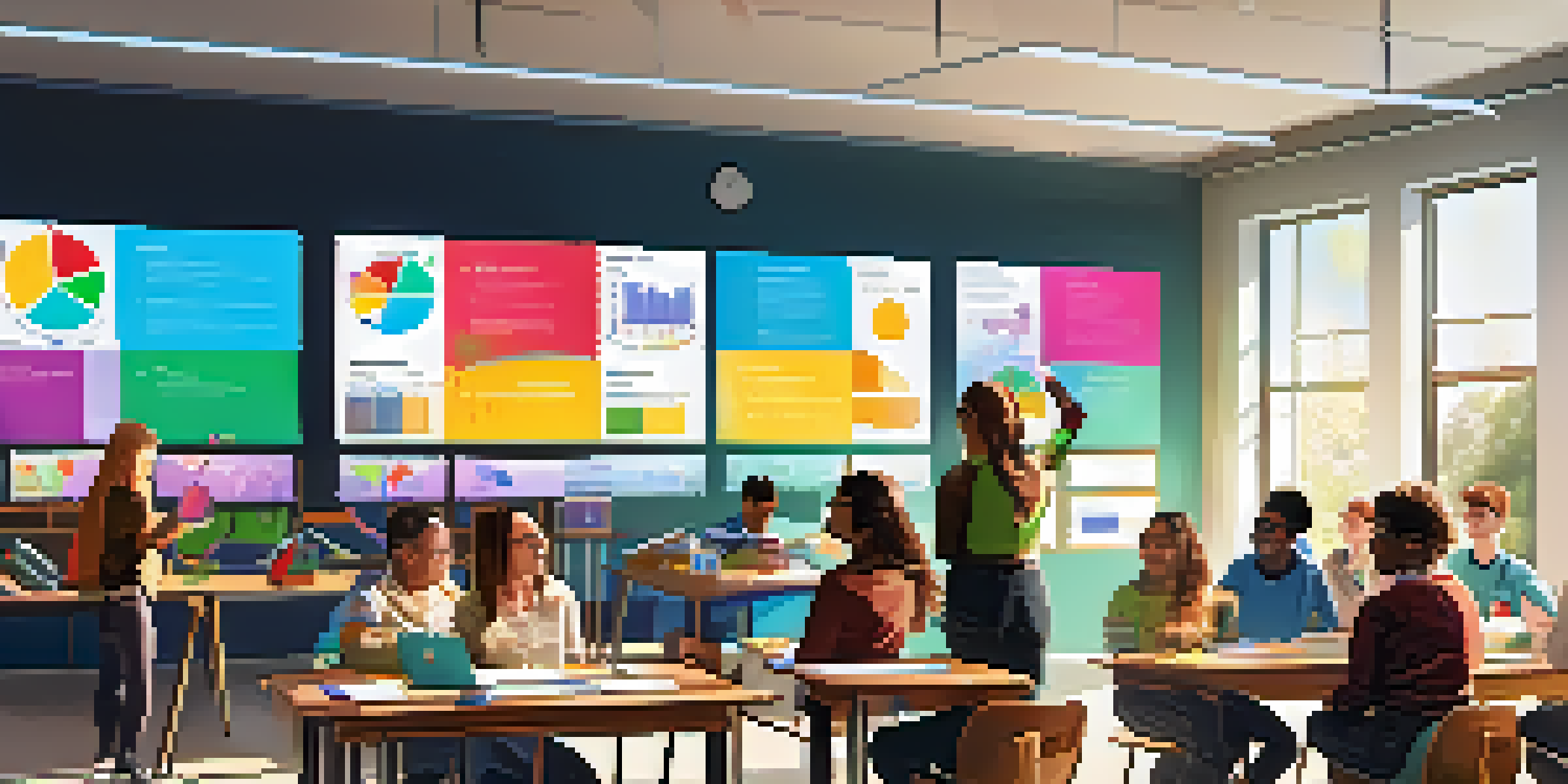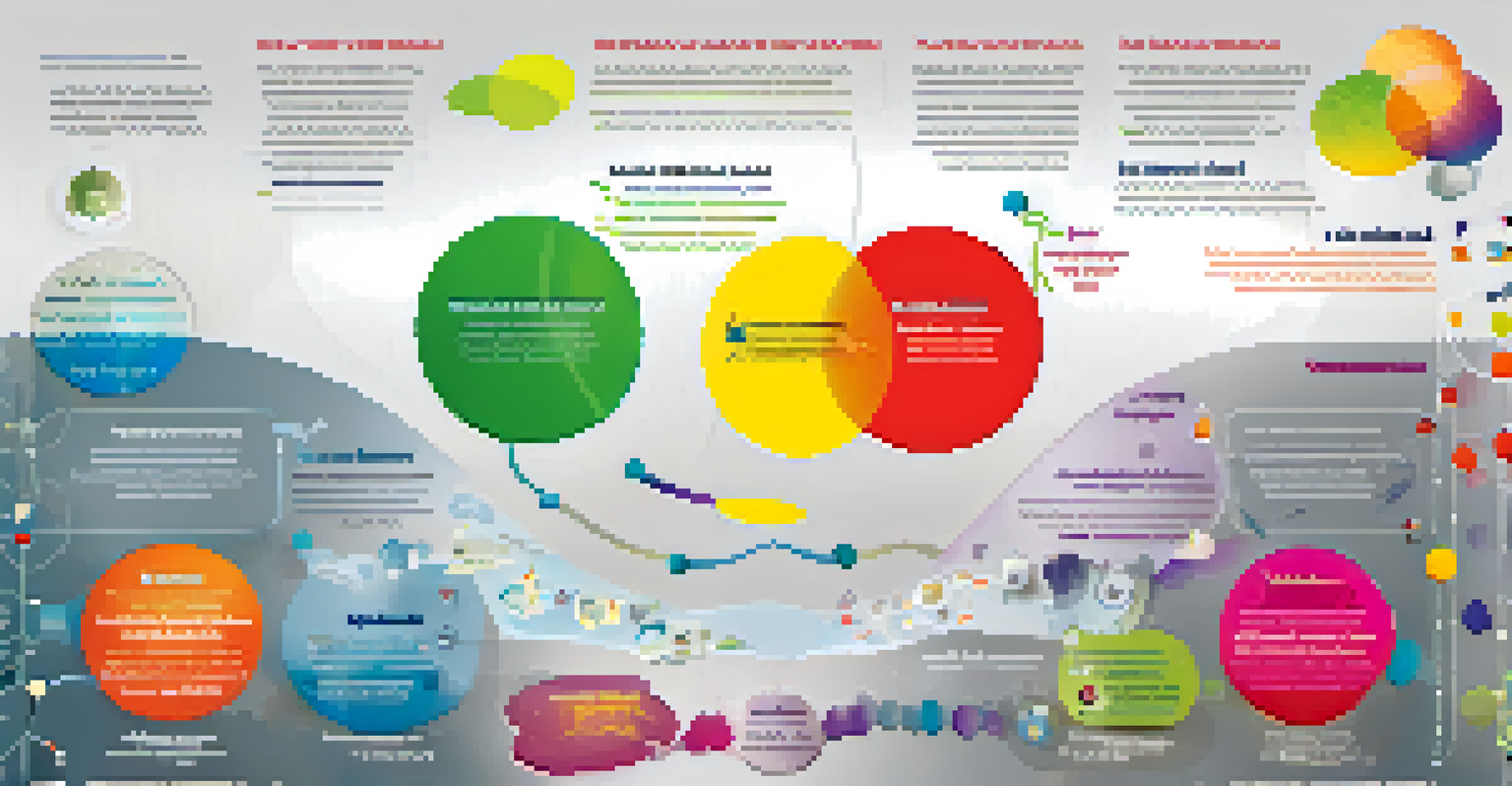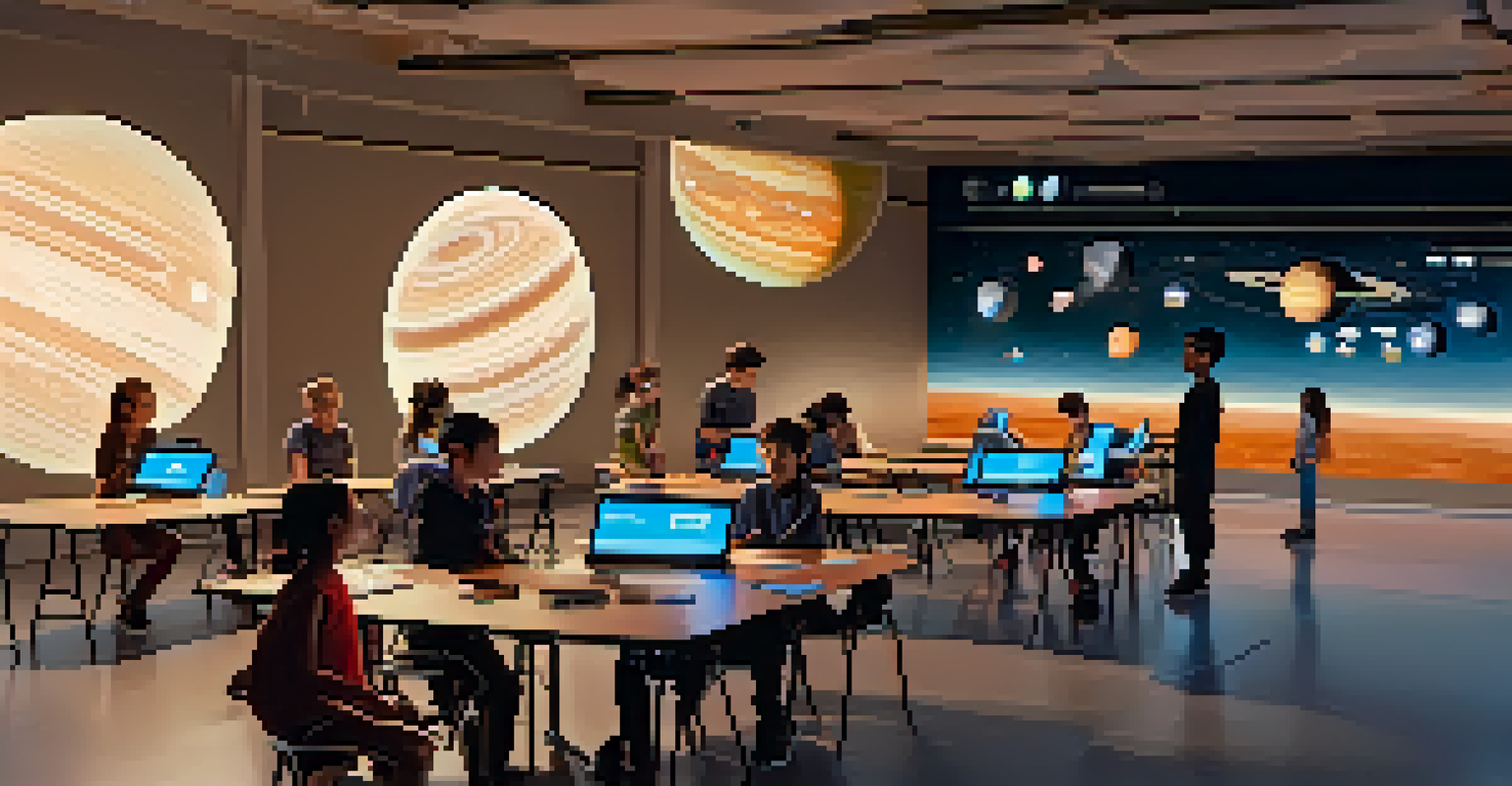The Role of Visual Learning in Interdisciplinary Education

Understanding Visual Learning in Education
Visual learning refers to the process of acquiring knowledge through visual aids, such as images, diagrams, and videos. This learning style caters to those who grasp concepts better when they can see them represented visually. For instance, a student may find it easier to understand complex scientific processes through an infographic than through a lengthy text description.
A picture is worth a thousand words.
In interdisciplinary education, where multiple subjects converge, visual learning becomes particularly valuable. Students are encouraged to connect ideas from different fields, and visuals can bridge those gaps effectively. By presenting information visually, educators can help students synthesize knowledge from various disciplines, fostering a more integrated understanding.
Moreover, visual learning taps into the brain's natural inclination to process images faster than text. This cognitive advantage can lead to enhanced retention and recall of information, making it an essential tool in the modern classroom. By integrating visuals into interdisciplinary curricula, teachers can create a dynamic learning environment that resonates with diverse learners.
The Benefits of Visual Aids in Interdisciplinary Learning
Visual aids, such as charts and graphs, serve as powerful tools in interdisciplinary learning. They not only simplify complex data but also highlight relationships between different concepts. For example, a Venn diagram can illustrate the overlap between biology and chemistry, making it easier for students to identify common themes.

These aids also cater to various learning styles, accommodating students who may struggle with traditional text-heavy approaches. By offering a more engaging way to absorb information, visual aids can boost motivation and participation in class discussions. This engagement is crucial in interdisciplinary settings, where collaboration and dialogue are key.
Visual Learning Enhances Understanding
Using visuals like diagrams and infographics helps students grasp complex concepts more effectively.
Additionally, visual aids can facilitate deeper discussions and critical thinking. When students analyze visuals, they are prompted to ask questions and explore connections across disciplines. This inquiry-based approach not only enhances understanding but also encourages students to think outside the box, preparing them for real-world challenges.
Incorporating Technology for Visual Learning
Technology plays a significant role in enhancing visual learning experiences. Tools like digital presentations, interactive simulations, and educational videos can help bring interdisciplinary concepts to life. For instance, using a virtual lab to conduct experiments can engage students from both science and technology backgrounds.
Visuals are the key to engaging learners in a meaningful way.
Moreover, online platforms allow for easy sharing of visual content, enabling collaborative projects among students from different disciplines. This collaboration fosters a sense of community and encourages the exchange of ideas, enhancing the overall learning experience. For example, a group project on climate change could combine perspectives from science, geography, and economics.
As technology continues to evolve, the possibilities for visual learning in interdisciplinary education will expand. Students will have access to a wealth of resources that can cater to their unique learning preferences, making education more personalized and effective. The future of education lies in harnessing these technological advancements to create rich, multimedia learning environments.
Real-World Applications of Visual Learning
Visual learning extends beyond the classroom, impacting real-world applications in various fields. For instance, in healthcare, visual aids like anatomical diagrams can help medical students understand complex bodily systems. This visual approach not only enhances learning but also prepares students for practical, hands-on experiences in their future careers.
In business, visual tools like infographics can simplify data presentations, making it easier for teams to communicate insights. When professionals can visualize trends and metrics, they can make more informed decisions that bridge marketing, finance, and operations. This integration of visual learning into real-world practices demonstrates its significance beyond academic settings.
Collaboration Boosts Learning Outcomes
Working together on visual projects fosters teamwork and encourages diverse perspectives in interdisciplinary education.
Ultimately, the ability to apply visual learning strategies in real-world contexts empowers students to become effective problem solvers. By understanding how to utilize visuals in various disciplines, learners can adapt to diverse challenges, enhancing their career readiness. This adaptability is crucial in today's fast-paced, interconnected world.
Fostering Collaboration Through Visual Learning
Visual learning encourages collaboration among students from different disciplines, which is essential in interdisciplinary education. When students work together on visual projects, they share insights and perspectives that enrich the learning experience. This collaborative approach not only fosters teamwork but also encourages respect for diverse viewpoints.
For example, a project that requires students to create a visual presentation on urban planning could involve input from architecture, sociology, and environmental science students. By pooling their expertise, they can create a more comprehensive understanding of the subject. This collaboration also reflects real-world scenarios where professionals must work across disciplines to address complex issues.
Furthermore, collaborative visual projects can enhance communication skills. As students articulate their ideas and provide feedback on each other's work, they develop a deeper understanding of the subject matter. This process empowers students to take ownership of their learning while building essential skills that will benefit them in their future careers.
Challenges of Implementing Visual Learning
While visual learning offers numerous benefits, it also presents challenges in interdisciplinary education. One challenge is the potential for oversimplification of complex topics. Educators must ensure that visuals complement rather than replace in-depth discussions, striking a balance between clarity and depth.
Another challenge is the varying proficiency levels among students in creating and interpreting visual materials. Some students may excel at crafting visuals, while others may struggle. Educators need to provide guidance and resources to help all learners develop these essential skills, ensuring that no one is left behind in the visual learning process.
Technology Transforms Learning Experiences
Integrating technology such as AR and VR expands opportunities for immersive and engaging visual learning.
Additionally, the reliance on technology can pose challenges, especially in under-resourced settings. Not all students may have access to the necessary tools for creating and accessing visual aids. Educators must seek creative solutions to ensure that visual learning remains inclusive and accessible for all students, regardless of their circumstances.
The Future of Visual Learning in Education
The future of visual learning in interdisciplinary education looks promising as technology continues to advance. With the rise of augmented reality (AR) and virtual reality (VR), students will have the opportunity to engage with content in immersive ways. Imagine exploring historical sites or biological processes from the comfort of the classroom—these experiences can significantly enhance understanding and retention.
Moreover, as educational institutions recognize the importance of diverse learning styles, visual learning will become increasingly integrated into curricula. Educators will be encouraged to experiment with various visual tools and techniques, fostering a culture of innovation in teaching. This shift will not only benefit students but also inspire educators to embrace creativity in their instructional methods.

Ultimately, the role of visual learning in interdisciplinary education will continue to evolve, adapting to the needs of future learners. By prioritizing visual learning strategies, educators can prepare students for a world that demands critical thinking, collaboration, and adaptability. The journey ahead is one of exploration, creativity, and endless possibilities.